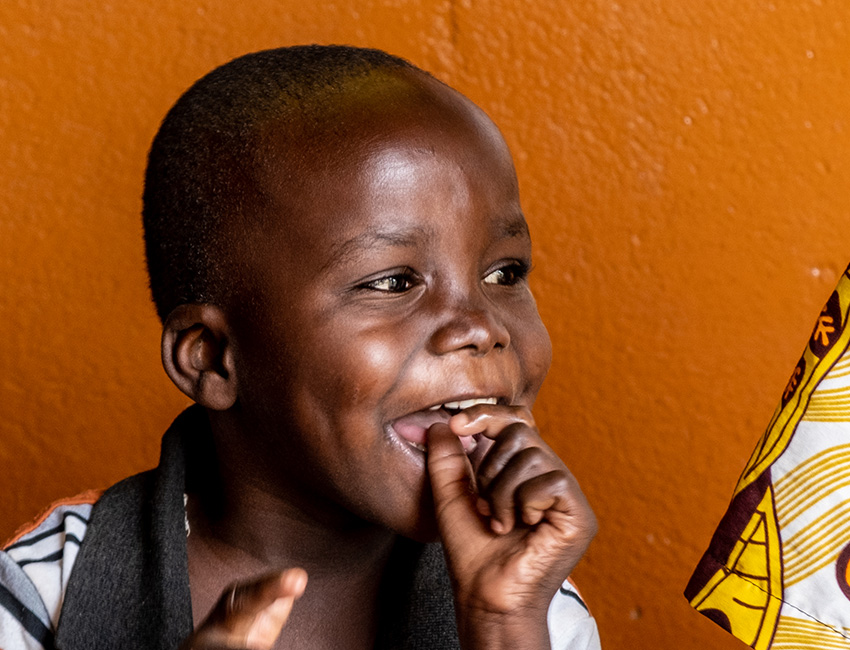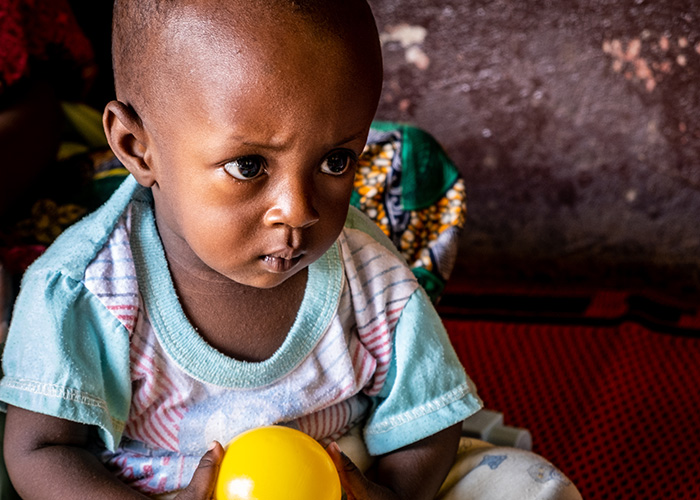Dieubéni fell ill at just four months old. His feet and face were swollen. He was too weak to walk.
After his mother left, Dieubéni’s grandma Jeannette began to look after him. She couldn’t understand what was wrong. Like many people, she wasn’t aware that extreme hunger can prevent a child from walking. And some children even struggle to swallow, which makes it hard – if not impossible – for them to eat what little food they do have.
“Dieubéni’s feet and face were swollen. He couldn’t use his arms and legs.
“I didn’t know these were symptoms of malnutrition. I didn’t expect that.”
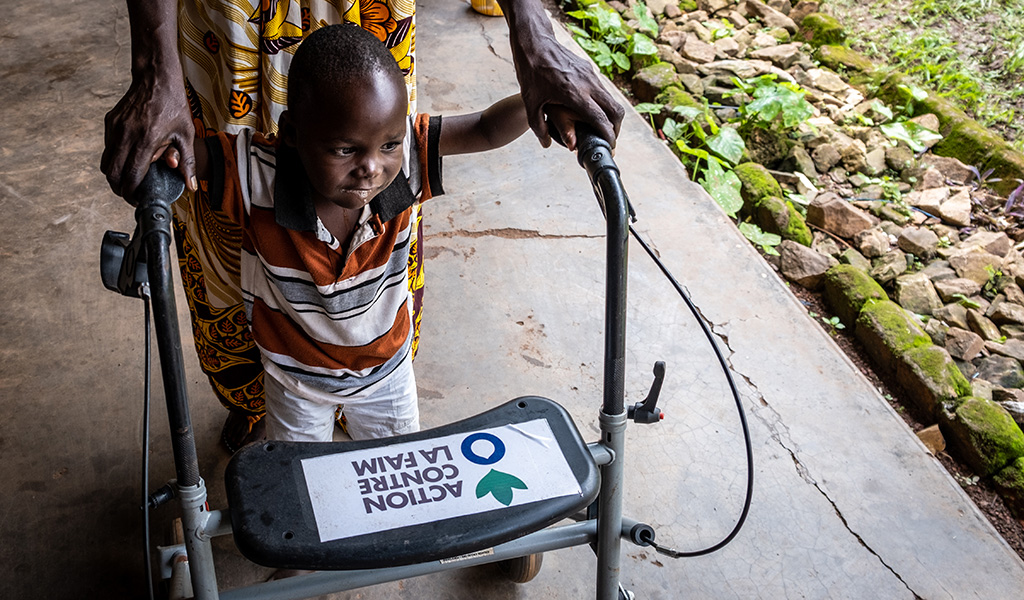
Because of his malnutrition, Dieubéni had to use a mobility aid to walk. Photo credit: Action Against Hunger/ Barbara Debout
But thanks to the support of amazing people like you, we were there to provide urgent treatment.
Our first priority was keeping Dieubéni alive. Then – after a course of nutrient-rich therapeutic foods – we turned our attention to his mobility. Supported by rehabilitation specialists, this determined little boy got stronger each day.
His persistence shone through and paid off. Now he can walk again!
“Before, my grandson couldn’t move his limbs. Today, he can walk and even eat by himself. I’m very happy about that.”
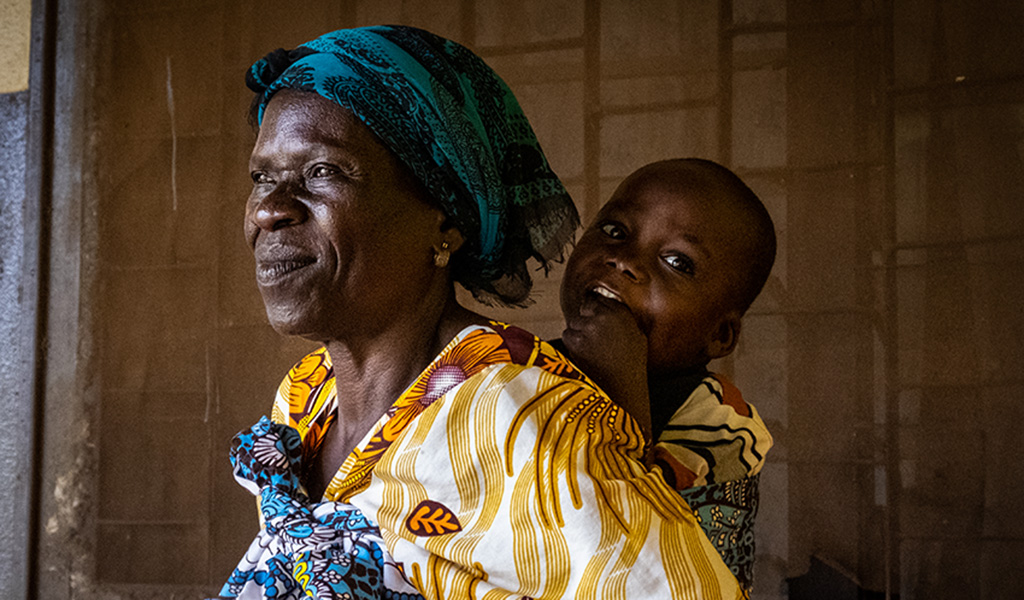
Dieubéni with his grandma Jeanette. Photo credit: Action Against Hunger/ Barbara Debout
What’s it like in one of the toughest places in the world to be a child?
The Central African Republic won’t be in the headlines on the news.
It’s a small, landlocked country with 4.9 million people and lots of valuable natural resources. But it’s also one of the world’s poorest countries. Prone to floods and in the midst of a decade-long war, right now thousands of families are on the brink of tragedy. One in four don’t have a home, there have been widespread fuel shortages and food prices have skyrocketed.
Around 70,000 children under five suffer from severe acute malnutrition – the deadliest form of hunger. It’s the leading cause of preventable child deaths here.
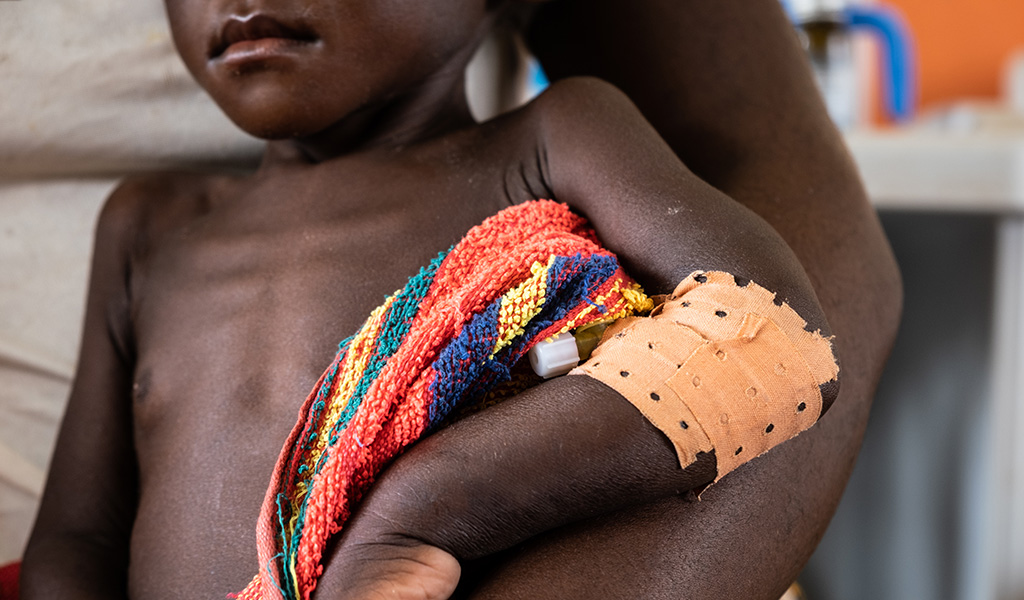
A child in Central African Republic with severe malnutrition being treated by Action Against Hunger. Photo credit: Action Against Hunger/ Barbara Debout
Six weeks to save a life
So how do Action Against Hunger save a child’s life from life-threatening malnutrition? Here’s a guide to our six week treatment programme.
Week 1
When a child like Dieubéni is admitted to one of our treatment centres, we immediately screen them to determine their treatment and care programme. We gently introduce the child to a special therapeutic milk and treat any other health conditions they have.
Week 2
We continue to carefully monitor and treat the child, with their parent or carer by their side to comfort them. Parents also receive advice and support from our nutrition team.
Week 3
With expert care, many children start showing signs of recovery at this point and can continue their treatment from home. We give them supplies of therapeutic food made from peanuts and powdered milk that has all the nutrients children need to recover.
Weeks 4 and 5
With further care and new routines at home, the child’s recovery is in full swing. Children are now visibly happier and healthier.
Week 6
The child is brought to the treatment centre where their weight is checked once more. If measurements show that the child is healthy, we can then discharge them. At this point, we put a care plan in place with the parents to keep the child on track for a brighter future.
And what happens next…?
After six weeks, we don’t stop. We work with parents to make sure they have everything they need so children can make a full recovery and thrive. Whether that’s working with children like Dieubéni to help them walk again or training parents on how to spot the signs of malnutrition, your donation will help us to be there and save young lives.
“I would like to thank Action Against Hunger for its very important support. I’m starting to see an improvement in Dieubéni’s health.”

